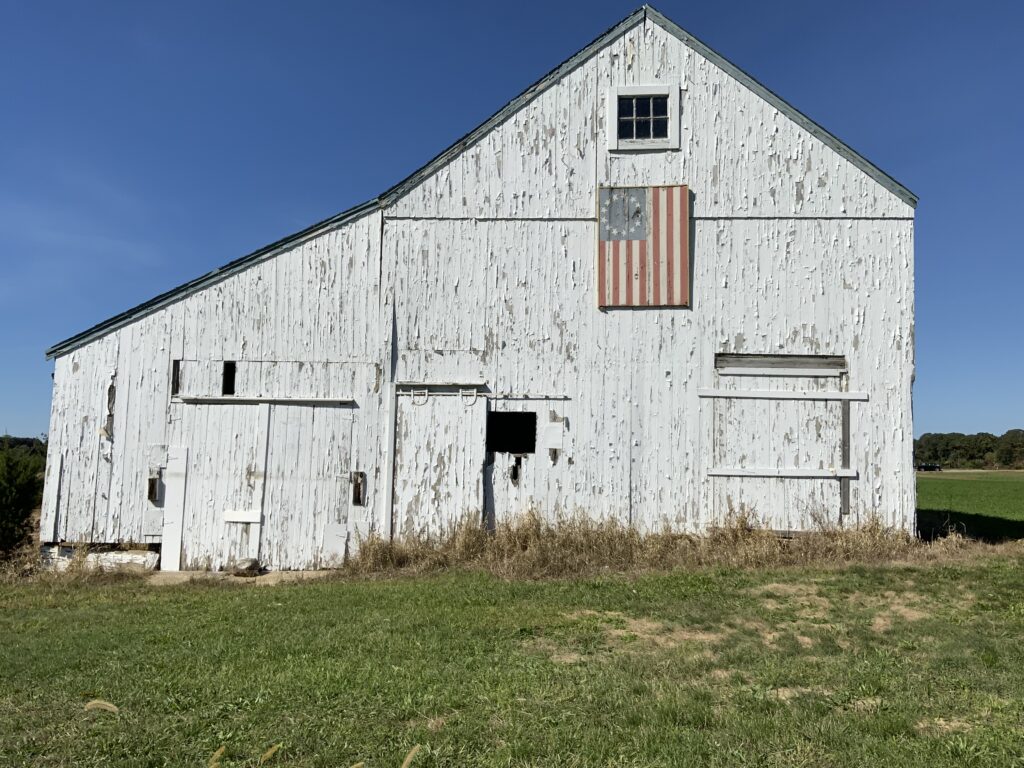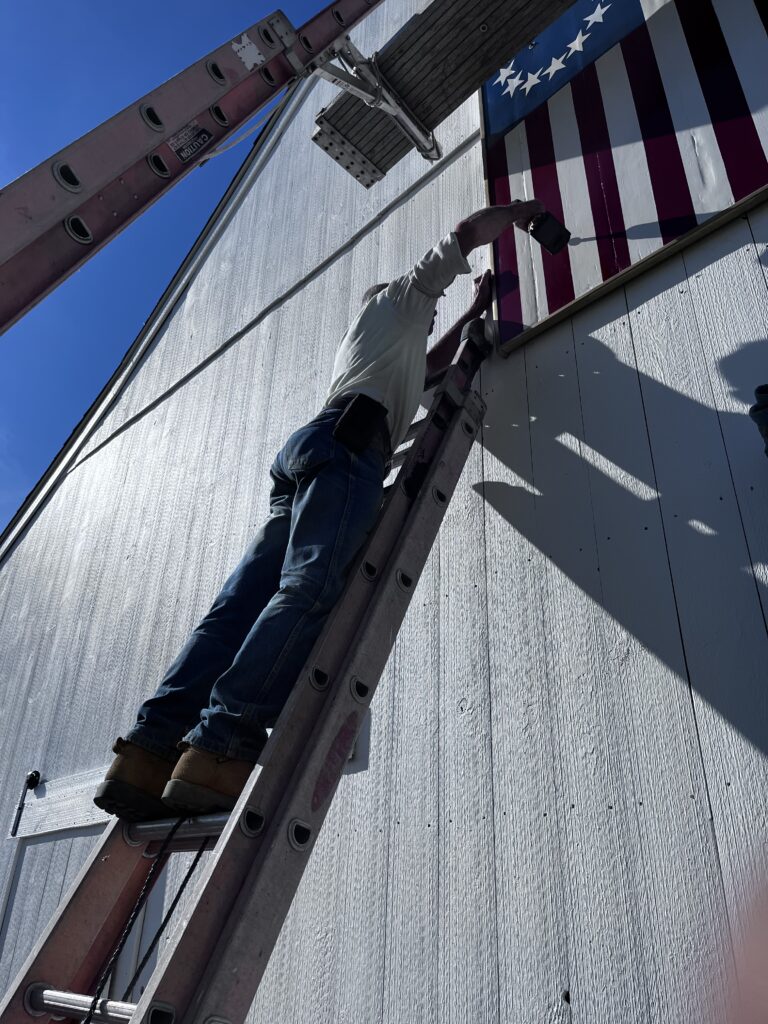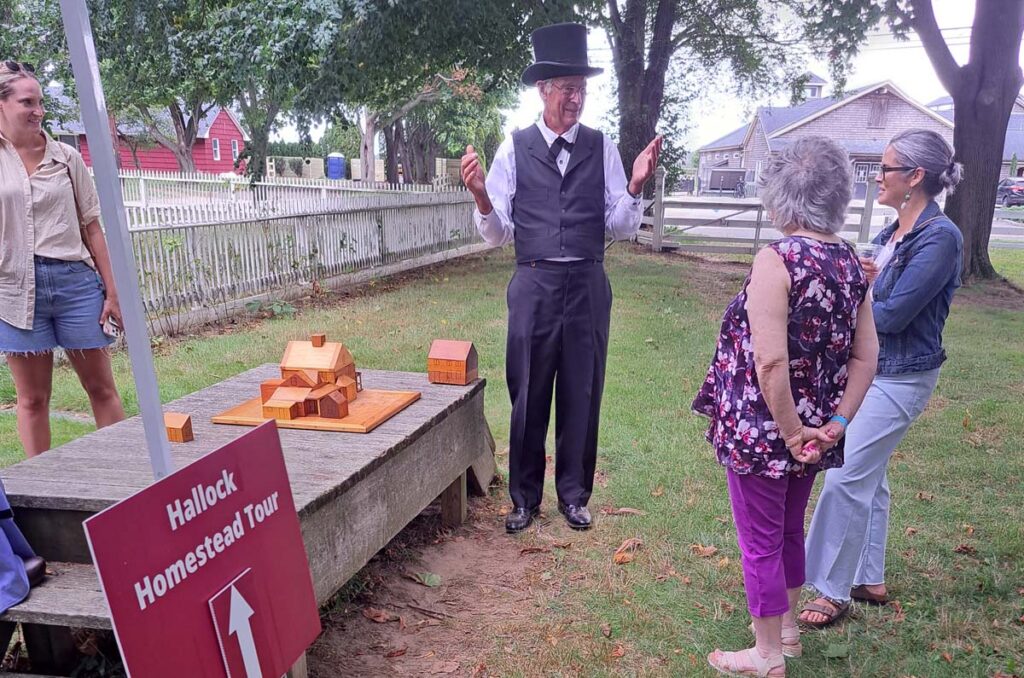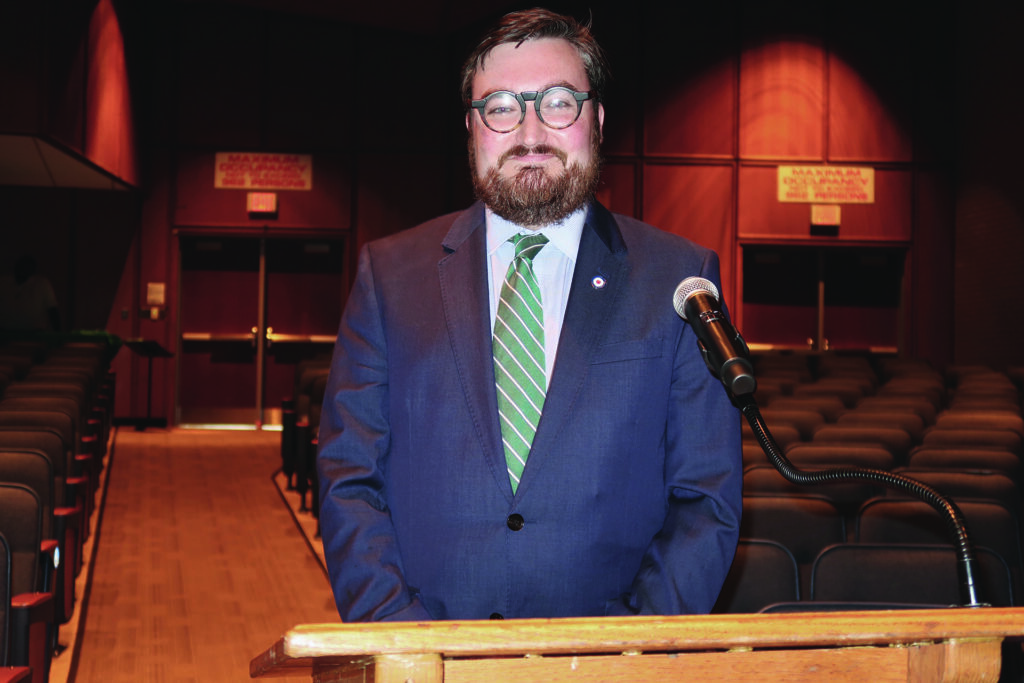Historic Laurel barn gets a facelift

After decades in decline, the iconic, long-suffering 19th century white barn adorned with a Betsy Ross flag on Main Road in Laurel has been almost completely restored.
“We were able to keep a lot of the same wood, or wood from that timeframe with some minor installation improvements,” said Christopher Lange, 29, of Half Hollow Nursery, the grandson of Lloyd Rasweiler — who bought the 625-acre farm in the 1960s. Mr. Lange owns the nursery along with his mother Sarah Lange and his aunt, Betty Rasweiler.
At present the barn — which once held mules — is empty.
“I don’t have any use for the barn right now.”
Mr. Lange said there’s still some interior work to do, and a new paint job on the back of the barn, but otherwise the work is complete.
He said that initially, he and his family didn’t understand what the fuss was about their barn. It had been deteriorating for years, but when the side of the barn facing Main Road started to rot, the family heard from the community.
“Everyone was up in arms,” he said with a laugh. ‘Oh no! The barn’s falling apart!’ To be honest with you, we were kind of just indifferent about it because to us, it was like, ‘What do you mean the barn is falling apart? It’s been falling apart for two decades now. It’s just that no one can see the other side from the road.”

Mr. Lange said it eventually became clear.
“The North Fork is very active with their landmarks, and I know they were talking about [the barn] on Facebook and social media. There was a lot of push to ‘do this’ and ‘do that.’ People were calling, asking me, ‘I want to donate to help, where can I do that?’
“It was kind of at that point where we were like, ‘Okay, this is very obviously important to the town and to us. So we’ll do it with our own funds.”
For the renovation, the family turned to John Dickey, a Connecticut-based specialist in reclaimed wood from historic structures who is known online as TimberGuy.
“We had to replace a lot of rotten wood, so we matched it with period-commensurate timber — not from right in Laurel, but from all over New England,” Mr. Dickey said in an interview.
He used spruce, pine and hemlock timber for the rebuild.
“The siding was pine and it is pine again. We did the match on that and got almost the exact same lumber.”
Mr. Dickey was most fascinated by the cedar corner posts.
“If you built a barn or a house today, you’d probably pour concrete pillars. You’d probably stick pressure-treated logs on top of it. This guy used cedar … he just dug a hole and put cedar trees in the ground. Half of them were rotted, but the other half were still there, and they were as hard as a modern piece of lumber.
“It’s just amazing,” he said. “Here’s this person, who decides to build a barn in the middle of a field. There’s not a lot of drainage. It wasn’t like they had stone around it. And they would just dig a hole — maybe by hand or a posthole digger — and stick a cedar tree log in a hole. And 150, 200 years later, it’s still sitting there, this cedar. The bugs are not interested in it. Even a pressure-treated piece [of wood] that I would use to make a deck would have been eaten in 30, 40 years. But here this thing was.”
Even the iconic Betsy Ross flag that decorates the white barn was lovingly restored, though not by Mr. Dickey.
“I would like to give the nephew of the guy who [first hung the flag on the barn] all the credit. I didn’t take it down. I didn’t hang it up … They took it down and did what I’d consider to be a 110% restoration that is better than the original.”
When work on the exterior was completed recently, he suggested the flag be hung back up by the nephew, whose name is Rob.
“I made him screw it back in,” Mr. Dickey said with a laugh. “Because I was — I don’t know — I’m not worthy to do this. This is pretty sentimental to these folks.
“So he was there that day and I said, ‘Get up on the ladder.’ He said, ‘I don’t like ladders.’ I said, ‘Get up there and do it.’ So he climbed up there and he hung the flag.”

It was the flag itself that ultimately saved the barn.
In 1995, Mr. Rasweiler gave away a rundown but historic 19th century house that sat on the edge of his property, next to the Laurel post office, to local historians Richard Wines and his wife, Nancy Gilbert.
The couple moved the dilapidated structure to Winds Way Farm, a 15-acre property in Jamesport where the they collect and repair historic structures.
“They had already ripped off the kitchen wing and all of the wide floorboards had been removed … it was basically just a shell,” Mr. Wines told the Northforker last year. “The owners were getting so much grief from the community for not tearing this house down that they gave it to us for free.”
Mr. Lange said the barn was next up on the chopping block.
“We got rid of [the house], and then we weren’t really using the barn, so we were going to get rid of it.”
He said his grandfather “just kept nagging” Bobby Burns, a local man who had promised to tear the barn down.
“One day, someone gave my grandfather that flag as a gift. And I think Bobby was tired of hearing grandpa kind of nagging him. He thought it was kind of funny, and so he put the flag up.
“And grandpa actually liked it.”
Mr. Lange said that “it was kind of like, ‘hey, that looks kind of cool.’
“So what ended up happening is the barn ended up staying that way. It was just a fluke. It was not intentional at all.”
Despite its status as a local landmark and a magnet for social media posts, Mr. Lange said, over the years people have been respectful of the working farm and nursery.
The family has received hundreds if not thousands of pictures of the barn from admirers over the years.
“It’s pretty much just drive-bys. I think people understand out there that you shouldn’t be walking through people’s farms.
“If you see most of the [posted] pictures, people are taking them from the road, which we appreciate.”








